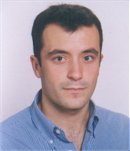|
|
|
Plenary Lecture
Facial Identification as non Invasive System

Professor Carlos Manuel
Travieso Gonzalez
Institutional Relations Vice-Dean
University of Las Palmas de Gran Canaria
Spain
Technological Centre for Innovation in Communications (CeTIC)
Higher Technical School of Telecommunications Engineering
E-mail: ctravieso@dsc.ulpgc.es
Abstract: The face identification is a non invasive method,
representing a great advantage against other biometric systems, which
request the userís collaboration. Two types of methods were proposed to
extract face features for expression recognition, namely the image-based and
the model-based methods. They differ in the way to process the images.
Model-based methods are a popular way to extract features. This type of
systems is quite hard to work with, due to the fact that people constantly
change their expression, even with just speaking. In fact, the typical
limitations for this type of systems are that the face should be inside a
certain margin of rotation (smaller than 15 degrees), and that the
expression should not change so much. Model-based methods should only be
applied when the subject cooperates for the recognition. Inside this type of
study, a great variety of references can be found. Image-based methods are
an alternative to extract facial expression features. They create a
transformation, to pass from the spatial domain (image) to another
transformed domain. This modality allows to research with a greater margin
of variation on the faces, since for this method it is not necessary to have
some characteristic points. The advantage of this type of techniques is that
it is able to distinguish persons regardless of wearing eyeglasses or light
beard, and even permits a greater degree of rotation of the head in all
directions.
Brief Biography of the Speaker:
Dr. Carlos M. Travieso-Gonzalez was born in Spain in 1971. He received the
M.Sc. degree in 1997 in Telecommunication Engineering at Polytechnic
University of Catalonia (UPC), Spain. Besides, he received Ph.D. degree in
2002 at University of Las Palmas de Gran Canaria (ULPGC-Spain). He is an
Associate Professor from 2001 in ULPGC, teaching subjects on signal
processing and learning theory. His research lines are biometric systems,
classification system, medical signal processing, environmental
intelligence, and data mining. He has researched in 22 International and
Spanish Research Projects, some of them as head researcher. He has 140
papers published in international journals and conferences. He has been
reviewer in different international journals and conferences since 2001. He
is Image Processing Technical IASTED Committee Member. He is Vice-Dean from
2004 in Higher Technical School of Telecommunication Engineers in ULPGC.
|
|
|